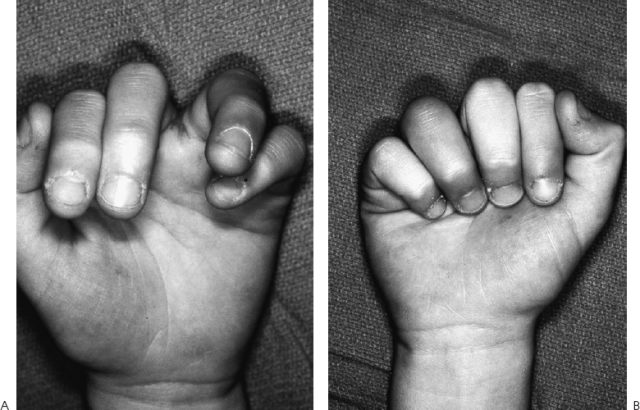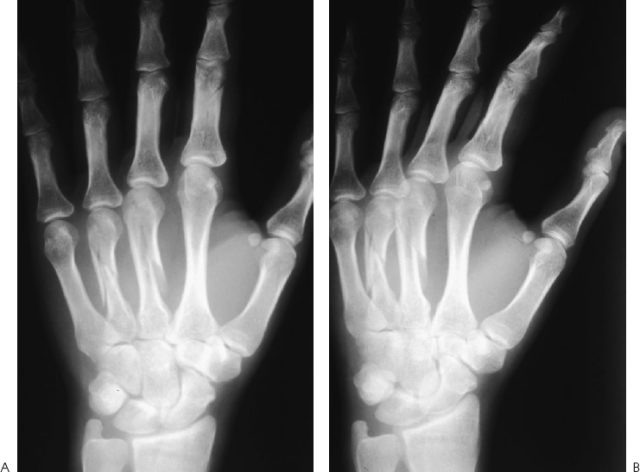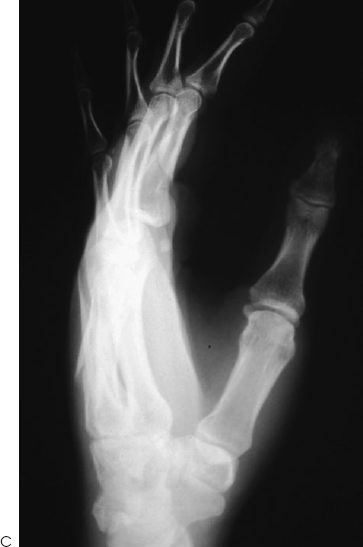42
Metacarpal Shaft Fractures
Robert J. Goitz, Sokratis Varitimidis, and Dean G. Sotereanos
History and Clinical Presentation
A 37-year-old right hand dominant woman was involved in a motor vehicle accident and presented complaining of pain in her left hand. She denied any previous injuries to this hand and her past medical history was unremarkable.
Physical Examination
The patient’s left ring finger appeared to be rotationally malaligned (Fig. 42–1A), compared with the right hand (Fig. 42–1B). She was tender to palpation over the middle ring finger metacarpals as well as the index proximal phalanx. The hand was neurovascularly intact with normal two-point discrimination to less than 6 mm. Her skin appeared intact, without any lacerations, and there was good capillary refill.

Figure 42–1. (A) Malalignment of the left ring finger overlapping the small finger. (B) Comparison view of normal contralateral right hand. All digits are aligned and point to the scaphoid tubercle.
Diagnostic Studies
Three views of the left hand were obtained including anteroposterior, oblique, and lateral radiographs (Fig. 42–2). They confirmed fractures of the middle and ring finger metacarpals and index proximal phalanx. The middle finger metacarpal had a long spiral fracture that extended approximately three cortical diameter lengths along the metacarpal shaft. The ring finger metacarpal shaft was comminuted. The metacarpals were shortened relative to the normal cascade between the index and small fingers as evidenced by the relative height of the metacarpophalangeal (MP) joints. The index proximal phalanx fracture was minimal to nondisplaced.
PEARLS
- Three radiographic views of the hand are necessary to understand the fracture configuration.
- Fracture geometry implies stability and will dictate optional treatment.
- Open or multiple metacarpal fractures or those associated with malrotation are indications for open reduction and internal fixation (ORIF).
- If ORIF is chosen, adequate stability for immediate motion should be the goal to minimize adhesions and limitation of digital motion.
PITFALLS
- Malalignment associated with a metacarpal fracture is difficult to assess following a closed reduction in a splint.
- Prior to open fracture reduction, an accurate understanding of the fracture configuration is necessary to avoid poorly positioned screws, which could propagate or further comminute the fracture.
- Technical errors such as overtightening the screws or placing them less than two screw diameters from the fracture edge may complicate ultimate stability of the fixation and delay the initiation of therapy.
Diagnosis
Long spiral fracture of the long finger metacarpal shaft
Comminuted ring finger extraarticular shaft fracture with rotatory malalignment
Minimal to nondisplaced index finger proximal phalanx shaft fracture


Nonsurgical Management
Stay updated, free articles. Join our Telegram channel

Full access? Get Clinical Tree








